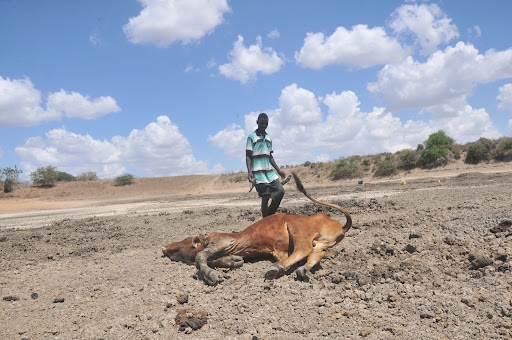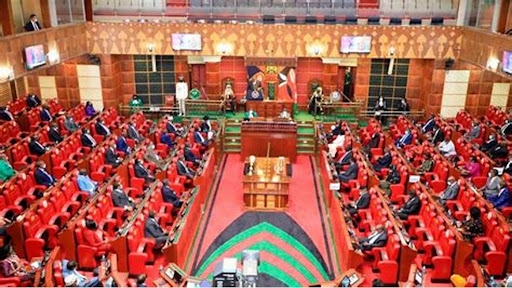
PRESIDENT Mwai Kibaki’s tenure in office opened a new chapter for Kenya’s economic revival, infrastructure rebuilding, and constitutional overhaul.
His administration put the Kenyan economy back on track with a growth rate from a low 0.4 per cent in 2002 to seven per cent by the end of 2007.
The Kibaki regime was also keen on transforming the railway system in the country, recognising the potential of the railway system to boost economic growth and connectivity within the country and the region.
The "lunatic express," the existing Mombasa-Kampala line, faced capacity and technical challenges, prompting the need for a modern alternative.
The LAPPSET project blueprint was made under the grand coalition government setting the plans for the Standard Gauge Railway (SGR), which would connect Kenya to its neighbours and also enhance connectivity within the country.
In 2008, President Kibaki and Ugandan President Yoweri Museveni issued a joint communique affirming the commitment to replace the existing railway with a standard gauge line, highlighting the shared vision for regional development
The Ministry of Transport later executed a Memorandum of Understanding (MOU) with China Road and Bridge Corporation (CRBC) in 2009, leading to a feasibility study that further solidified the plans for the SGR.
The SGR project, primarily focused on the Mombasa-Nairobi section, was designed to replace the existing, outdated railway and improve transportation efficiency. The project also included plans to extend the SGR to other parts of the country and connect with neighbouring nations, further enhancing regional integration and trade.
While President Kibaki envisioned the SGR as a long-term project, the focus shifted towards its rapid construction during the succeeding presidency. The ongoing development of the SGR and its associated infrastructure continues to drive economic growth and development in various sector
Since the commencement of passenger services in June 2017 and the launch of freight operations in January 2018, Afristar, the SGR operator, has transported over 15.16 million passengers and moved over 39.78 million tonnes of cargo via freight services by April 2025.
The operator has also reduced road congestion and carbon emissions along the Mombasa–Nairobi corridor, achieving over 2,892 consecutive days of safe operations. This has also led to seamless integration of freight services with Mombasa Port and inland container depots in Nairobi and Naivasha, leading to port decongestion and smoother logistics.
Additionally, the convenience and efficiency of the SGR have stimulated business growth along the corridor. Entrepreneurs can now travel, conduct business, and return within the same day.
The reduced cost and time of doing business, especially with the decongestion of the Port of Mombasa (Port Reitz), underscore the broader socio-economic benefits of the railway.
Afristar’s human capital strategy has focused on localisation, which currently stands at 90%+. The company established a structured Skills Transfer Programme in partnership with China Road and Bridge Corporation (CRBC), which includes on-the-job training, classroom instruction, and overseas exchanges.
Over 2,000 Kenyan staff have received specialised training in rail operations, signaling, dispatching and maintenance. The successful transition of critical roles from Chinese to Kenyan personnel in areas such as train control and maintenance supervision demonstrates that Afristar has met most of its localisation targets.
Training
is conducted regularly to ensure that employees across departments,
workshops and stations remain current and well-equipped with evolving
railway knowledge.
Over the years, Kenyan staff have demonstrated remarkable adaptability, discipline, commitment and a strong willingness to learn, facilitating the seamless handover of key operational roles.
Achieving synergy among diverse stakeholders in a national infrastructure project is inherently complex. However, Afristar has maintained a strong relationship with Kenya Railways Corporation (KRC) and various customer groups through structured dialogue and compliance reporting.
This includes regular joint review meetings, timely
submission of operational data, joint inspections along railway infrastructure,
and responsiveness to customer feedback. The company’s commitment to
transparency and joint problem-solving has fostered long-term trust and
operational harmony.
The SGR operator has achieved operational excellence through strategic planning and technological integration. Key factors include the adoption and implementation of operational standards tailored to Kenya’s context to ensure efficiency and safety.
The use of modern locomotives and carriages, paired with scheduled maintenance and real-time system monitoring has ensured consistent performance. Afristar’s Dispatch Center coordinates operations with high precision, minimising delays and maximising reliability.
As the SGR operations mark the eighth anniversary on May 31, it is imperative to acknowledge stakeholders such as local governments, logistics firms and security agencies that have been supportive, contributing to smooth operations across stations and the freight corridor.
The author is a communication practitioner in the railway transport sector















